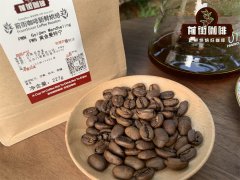One way to tell the difference between espresso and cappuccino or latte
Water, coffee, air and milk. These are the four basic elements of Italian cafe recipes, and cappuccino is one of its hallmarks. As it passes through a layer of finely ground coffee, the softened water absorbs typical features and is transformed into an elegant espresso, covered with iconic nut brown cream and a classic aroma.
At the same time, the steam stick blows hot air through the milk, creating a whirlpool, changing its structure and turning it into soft and delicate cream milk. The combination of espresso and milk foam is a perfect combination of color, flavor and flavor to form a unique Italian cappuccino.
Cappuccino is the symbol of Italian cafe
With the addition of milk, cappuccino is the first drink ever created by changing the characteristics of espresso, one of Italy's most ingenious creations.
Millions of consumers around the world have fallen victim to the charm of cappuccino. Cappuccino with "cornetto" (Italian croissant) is a classic Italian breakfast.
In Italy, millions of espresso are prepared every morning, nearly half of which are used for cappuccino.
Considering the total daily consumption of espresso, the number of cappuccinos in Italy hovers around 20%, because cappuccinos are just a breakfast drink in Italy!
In other countries, these statistics have soared because more than 80% of espresso is used as cappuccino.
Along with espresso, cappuccino occupies its rightful place in the standard-bearer of foreign Italian food.
Their popularity has also been confirmed in language. The terms "cappuccino" and "espresso" are among the most important words in Italian history and culture.
Starting from "frappuccino", the words "cappuccino" and "espresso" are often used to evoke the Italian tradition until the improper phenomenon of Italization.

The origin of cappuccino...
It appeared in 1660, when exotic hot drinks such as tea, cocoa and coffee became more and more popular. Johan Nieuhof, a world traveler and Dutch ambassador to China, was the first to try to add milk to coffee, imitating the way tea is consumed.
The clear boundaries between history, legends and folklore are blurred by many stories about other possible ancestors of cappuccino.
No espresso, no cappuccino.
To be sure, before the invention of the espresso machine, there was no mixture of coffee and milk that could be called cappuccino.
The classic Italian cappuccino consists of 100-140 ml of perfectly foamed and poured fresh whole milk, equal amounts of liquid and foam, and more than 25-30 ml of espresso in 150-220 ml cups.
Important Notice :
前街咖啡 FrontStreet Coffee has moved to new addredd:
FrontStreet Coffee Address: 315,Donghua East Road,GuangZhou
Tel:020 38364473
- Prev

How to keep the brewed coffee freshly brewed? can the coffee be kept warm?
A cup of fresh coffee, especially hand-brewed coffee, does not take much time to brew, but there is a lot of preparation for brewing. If you want to go home and make a pot of coffee all day at work, your body may not listen to you. Yes, everyone wants to get a cup of coffee right away when they get home from work, so it is extremely important to prepare a cup of fine coffee in advance.
- Next

What are the techniques for roasting coffee? there are a variety of substances in the roasting process.
Baking is an alchemy that not only transforms and merges, but also remains mysterious and magical. It determines the typical aroma and flavor of the unique drink we commonly call coffee, which is a necessity for billions of people around the world. If coffee trees were found in medieval Europe, then some coffee lovers are likely to go to the fire like witches! Roasting is the basic stage of processing coffee beans.
Related
- What brand of black coffee is the most authentic and delicious? what are the characteristics of the flavor of the authentic Rose Summer Black Coffee?
- Introduction to the principle and characteristics of the correct use of mocha pot A detailed course of mocha pot brewing coffee is described in five steps.
- Which is better, decaf or regular coffee? how is decaf made?
- How much is a bag of four cat coffee?
- How about four Cat Coffee or Nestle Coffee? why is it a cheap scam?
- Which is better, Yunnan four Cats Coffee or Nestle Coffee? How about cat coffee? is it a fake scam? why is it so cheap?
- How about Cat Coffee? what grade is a hoax? which instant coffee tastes better, four Cat Coffee, Nestle Coffee or G7 coffee?
- Process flow chart of coffee making-Starbucks coffee making process what coffee tastes good at Starbucks
- The top ten best coffee beans in the world Rose summer coffee or Tanzanian coffee tastes good
- Yunnan four cat coffee is good to drink?_four cat coffee is a big brand? four cat blue mountain coffee is fake?

